Sugar doughnuts (Ντόνατς με ζάχαρη)
These classic Greek sugar doughnuts, called zaharota or Loukoumades tis paralias in Greek, are large, light and fluffy soft on the inside. After they are fried they are coated in sugar for the perfect sweetness and crunch with every bite.
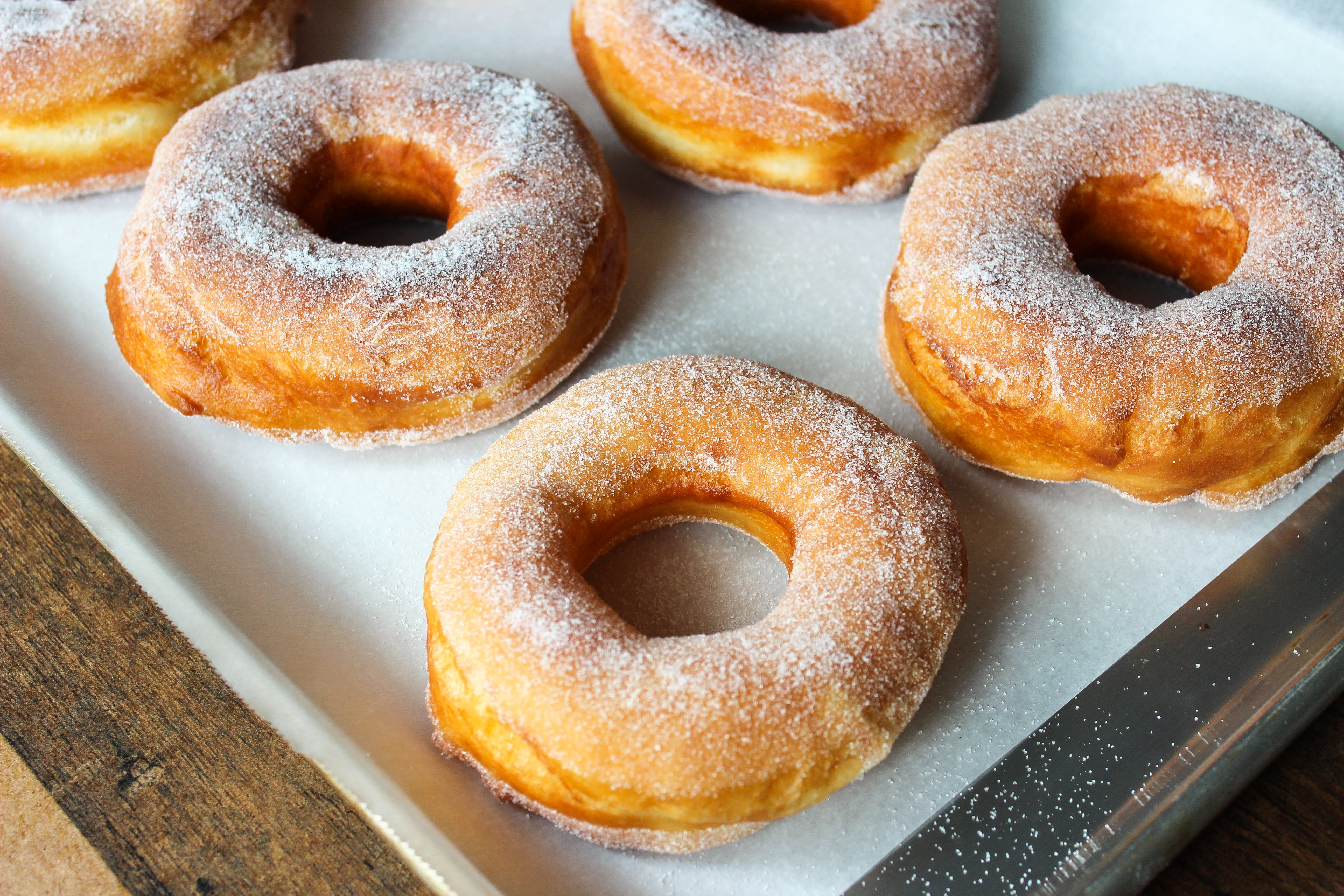
Growing up Greek meant that summers were often spent in Greece. While there we adopted a Greek lifestyle, which included afternoon siestas, lunch as the main meal of the day, late dinners and breakfasts which were pretty carb-heavy. Often the first meal of the day would be a glass of milk and koulourakia or lalagia. For something sweeter my aunt would head to the nearby bakery to pick up a bougatsa or zaharota, the traditional Greek sugar doughnut.
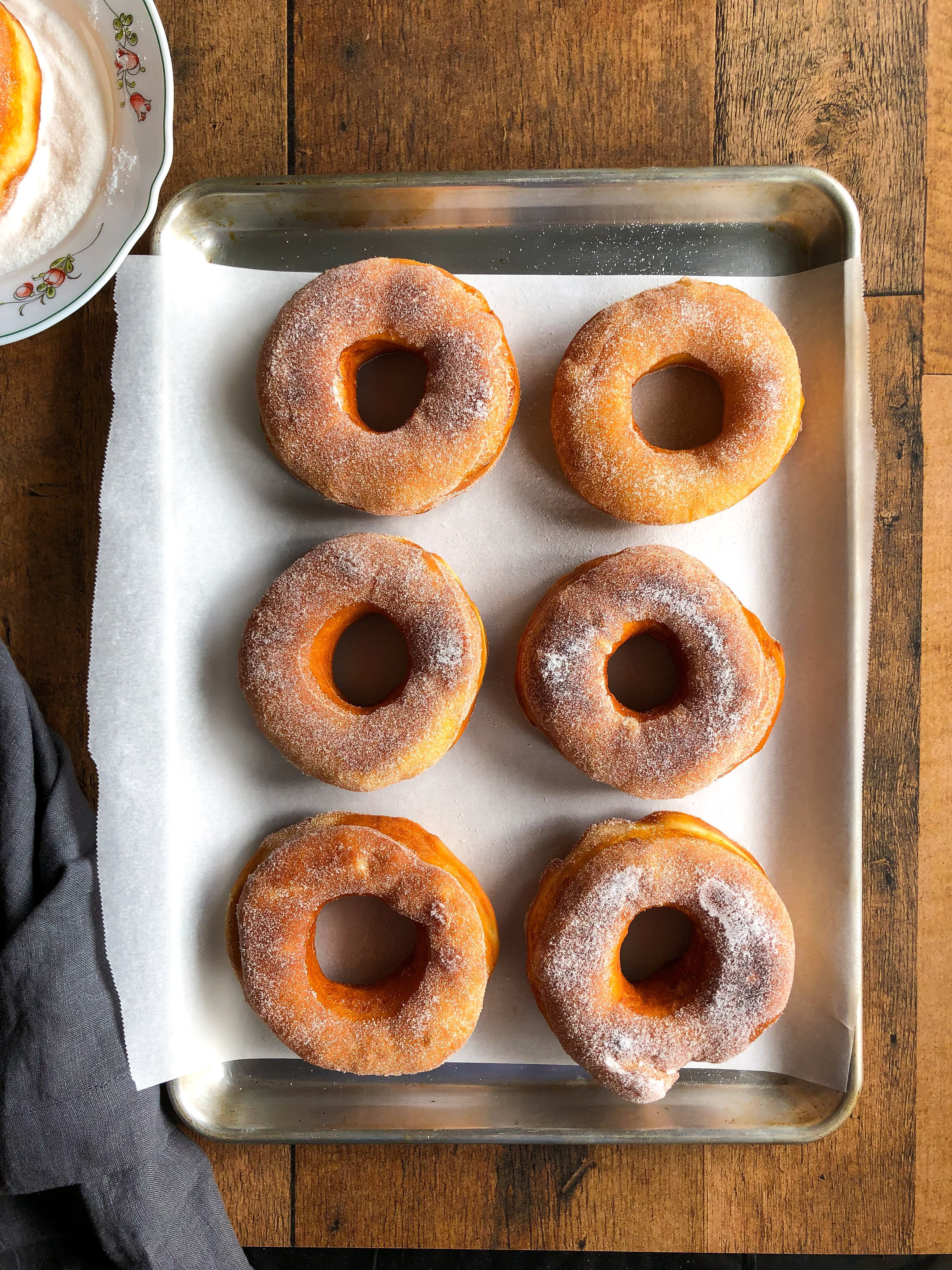
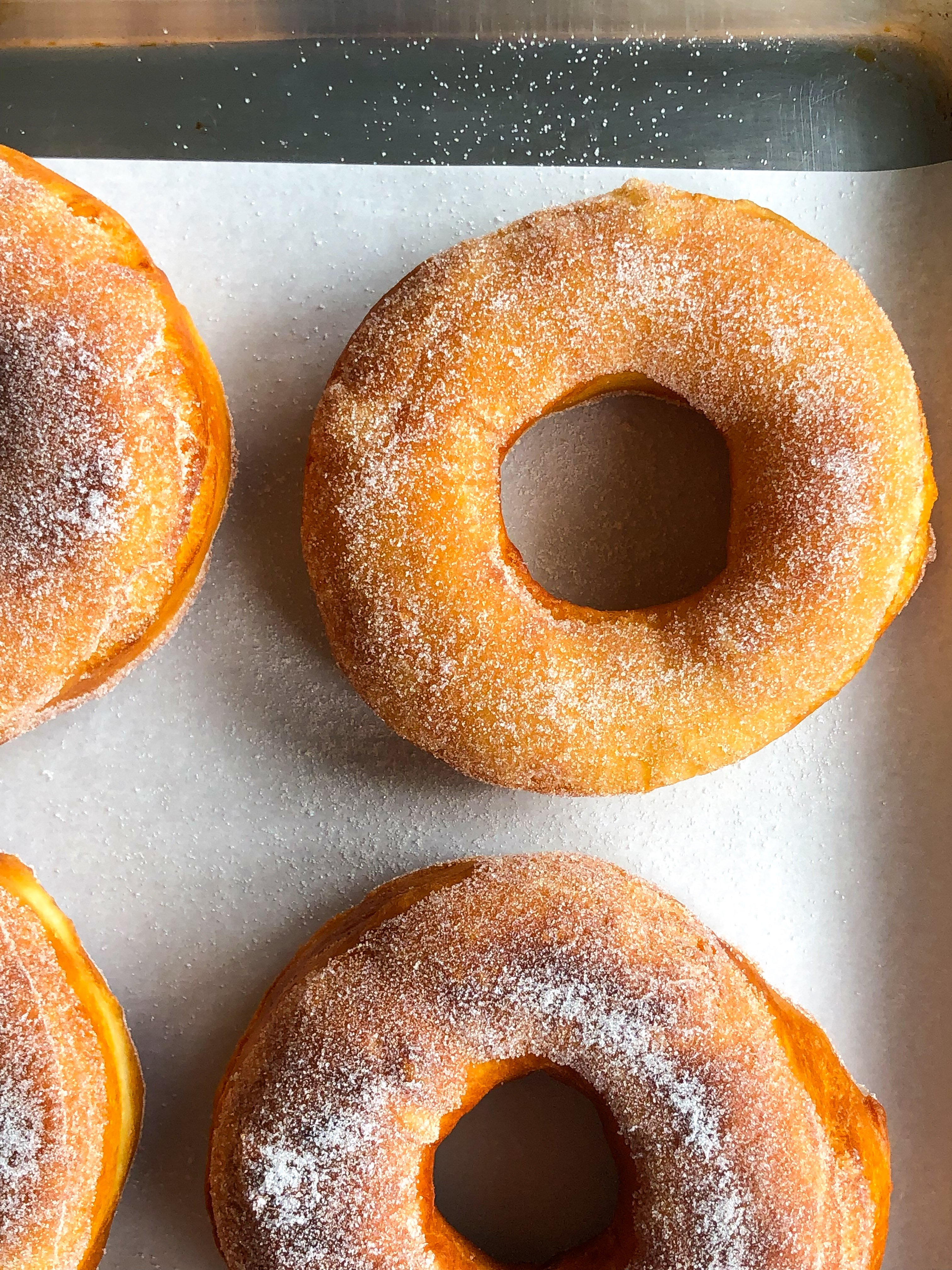
Why I love this recipe
I am so excited to share this recipe with you! Large, light, and perfectly sprinkled with crunchy sugar, these are the classic Greek doughnut. Some people refer to these sugar doughnuts as loukoumades tis paralias (beach loukoumades), but in our family, and on our beach, they were always sugar doughnuts (donats me zahari) or zaharota (sugared).
I feel a special kinship with these sugar doughnuts. When in Greece, they are a typical breakfast. When I was younger and our family would visit during the summer, my aunt would often be the first one up and she would head to the bakery down the road and return with a paper bag full of freshly made sugar doughnuts. With a glass of milk, and when we were older with a cup of Greek coffee, this was how we began our day. This was extra special because at home breakfast was never dessert! On the days when breakfast was fresh eggs instead, we got our doughnut fix on the beach. The beach in Kalamata always had a vendor walking up and down the pebbled shore of the paralia, offering sugar doughnuts that he displayed on a long wooden stick. Think ice cream truck, Greek-style.
Because they knew how much my siblings and I loved them, our parents tell us that they spent a few years trying to replicate these classic Greek doughnuts. I’m not sure that it was actually years, but even if it was, it was well worth it. This recipe is almost identical to the doughnuts we enjoy in Greece. All that’s missing is our aunt, and the beach.
Key ingredients
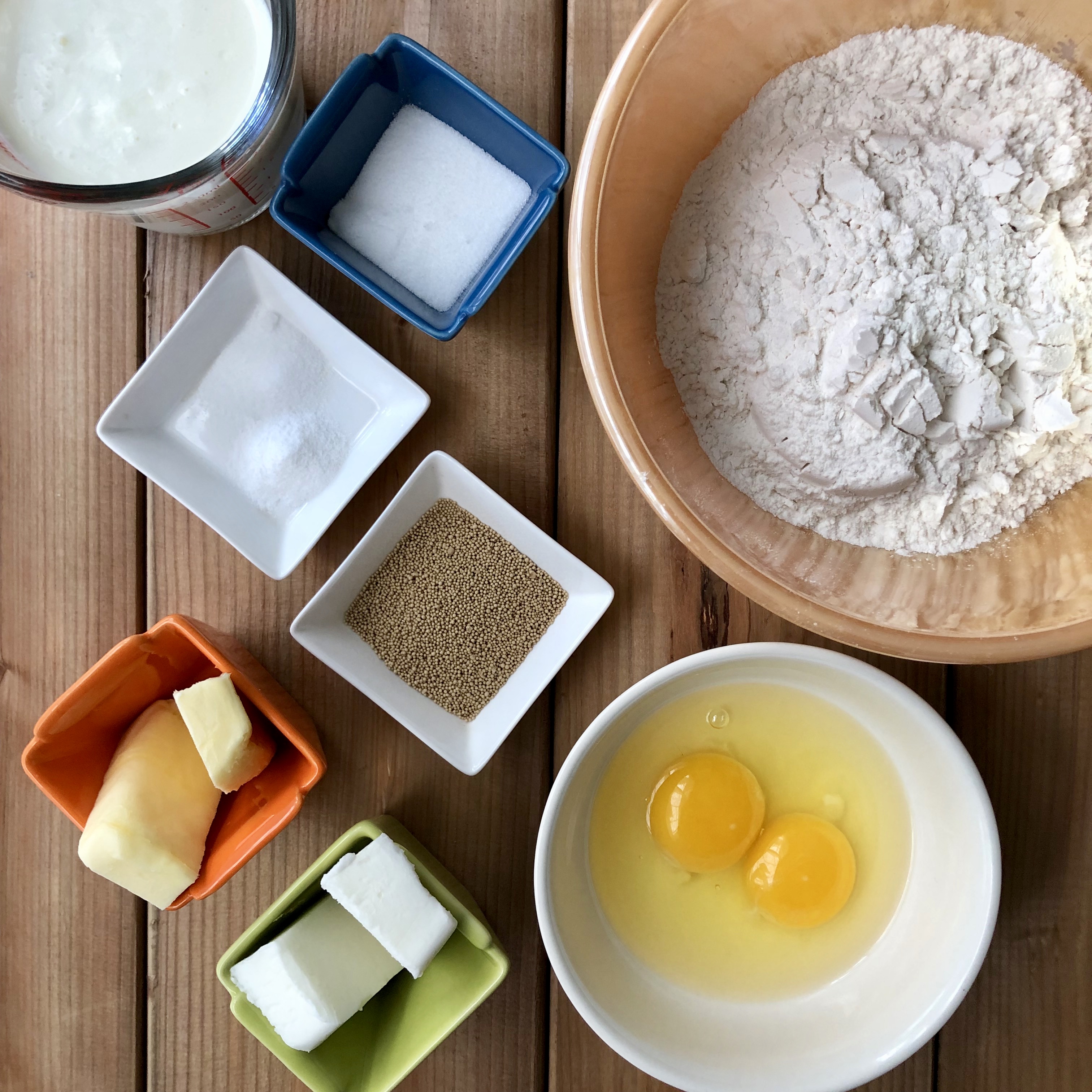
Making these doughnuts at home is pretty easy, and does not require complicated ingredients. Here is all you need to enjoy this classic Greek sweet at home.
Milk I use either full fat or 2% fat dairy milk that I have brought to room temperature.
White vinegar I add the vinegar to the milk to make a sort of buttermilk, because I don’t often have buttermilk handy.
All purpose flour Also called regular or plain flour, this is an easily available and very versatile wheat flour that I use in almost all of my baking.
Superfine sugar I make my own superfine sugar by placing white granulated sugar in a blender or food processor and whizzing it until it becomes a fine white powder. You can also buy superfine sugar, but it is usually difficult to find, and quite expensive.
Dry yeast I use dry yeast. I like to keep my yeast in the refrigerator, where it keeps longer.
Vanilla I either use vanilla powder (like my parents do) or vanilla extract. The powder is more concentrated in flavour so I use half the amount that I would the extract.
Salt Almost all baking can use some salt to really elevate the flavours.
Eggs I use large eggs that I have brought to room temperature.
Butter I use unsalted butter because I can control the amount of salt that I add to the recipe. I soften the butter by leaving it on the counter for a while. It is ready when I can easily press my finger into it.
Vegetable shortening Along with the butter I use vegetable shortening, which is also brought to room temperature. You can replace the vegetable shortening with vegetable oil, equal amounts.
Vegetable oil or Canola oil I fry the doughnuts in vegetable or canola oil. They are mild in flavour, easy to find and have a good smoking point for frying.
Granulated sugar Once fried I dip the doughnuts in granulated sugar, making the classic Greek sugar doughnuts.
How to make
Making these doughnuts at home is so much fun.
Step 1
Combine the milk and the vinegar. Stir and let stand at room temperature for approximately 5 minutes and then stir again. This will make sour milk, which will curdle slightly.
Step 2
In the bowl of a stand mixer, combine the sour milk with 1 tablespoon of the superfine sugar and the dry yeast. Mix well to dissolve the yeast.
Step 3
Add 3/4 cup flour to the bowl, mix well to create a smooth paste and then cover with plastic wrap and let the flour mixture rest in a warm place for 30 minutes.
Step 4
After 30 minutes, to the bowl with the flour mixture add the remaining 2 tablespoons superfine sugar, eggs, butter and vegetable shortening. Mix on low speed using the paddle attachment of your stand mixer until all is well combined. Then, switch to your dough hook attachment and add the rest of your flour, the salt and vanilla.
Step 5
Mix well on low speed until the dough starts to come together and pulls away from the sides of the bowl. The dough should be smooth and sticky, but you should be able to roll it out at this point if you needed to (which you don’t).
Step 6
Cover the dough with plastic wrap and allow to rest in a warm place for 30 minutes.
Step 7
After 30 minutes have passed, punch down on your dough to remove any gas bubbles which may have formed. It will be sticky. Then, cover your bowl once more with plastic wrap and keep the dough in your refrigerator for at least 1 hour and up to 24 hours.
Step 8
When you are ready to make your doughnuts, roll out your chilled dough on a surface which has been lightly floured. Roll the dough to 1/2 inch thickness and use a doughnut cutter to form your doughnuts. I like to use 2 round cutters to make the large doughnuts which are more traditional and typically Greek. Keeping your surface constantly floured will make it easier to roll out the dough.
Step 9
Transfer your doughnuts to a parchment lined baking sheet. Lightly oil the surface of your parchment paper, to prevent dough from sticking to it. When you have finished shaping your doughnuts allow them to rest for 30 minutes at room temperature.
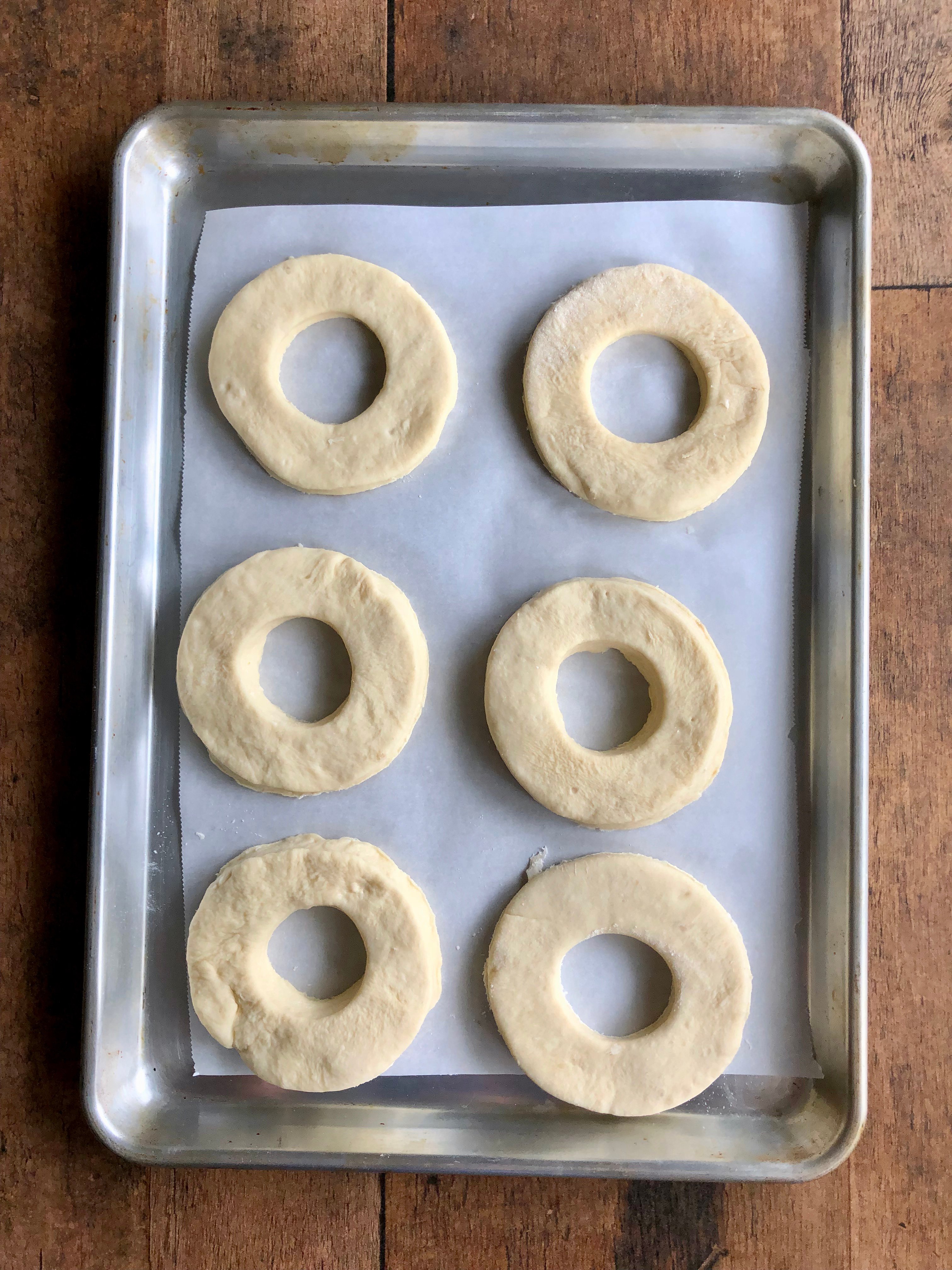
Step 10
Heat enough vegetable oil to come up 1/2 inch in your frying pan. I like to use a small frying pan so that I can fry one doughnut at a time. When your oil is quite hot, about 330 degrees F, carefully slip one doughnut into the oil. Cook over medium low heat for approximately 60 seconds per side. Using 2 forks makes flipping your doughnuts over quite easy.
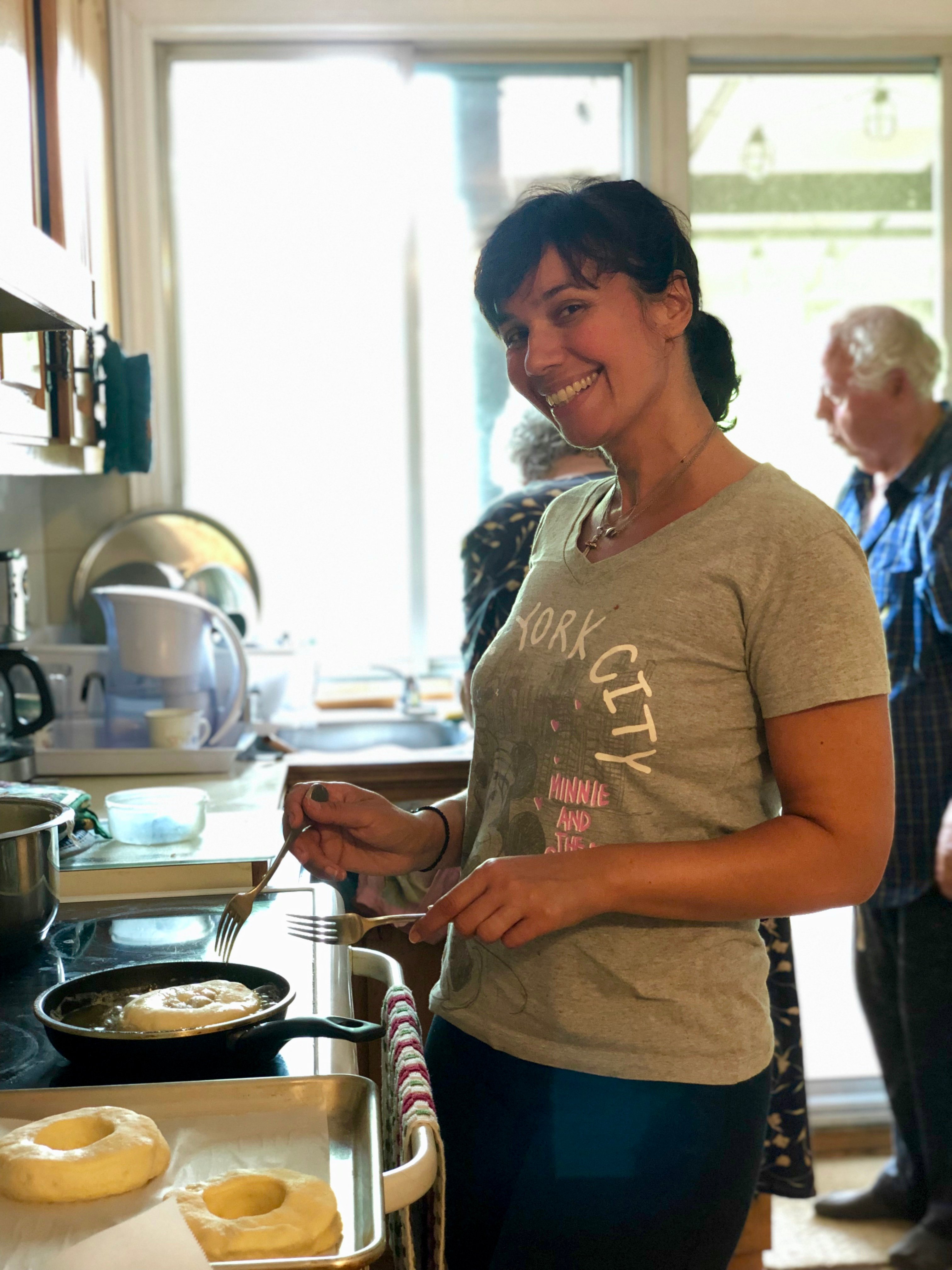
Step 11
Transfer your cooked doughnuts to a cooling rack. Repeat until all of your doughnuts are fried.
Step 12
In a shallow bowl add the granulated sugar. Transfer your doughnuts, one at a time to the dish and shake them gently so that they get coated with the sugar. Flip your doughnut and repeat so that both sides are coated with sugar. Repeat with all of your doughnuts.
Recipes substitutions
You can use buttermilk instead of the milk and vinegar. Alternatively, you can use lemon juice instead of the vinegar to make your homemade soured milk.
If you prefer to use only butter and no vegetable shortening, you can. Just keep in mind that the texture of your doughnuts will not be as light and fluffy; they will be a bit more dense.
You can replace the vegetable shortening with vegetable oil.
Recipe variations
Make cinnamon sugar doughnuts
Add a teaspoon of cinnamon to the sugar you will use to coat your doughnuts. Mix together well and make cinnamon sugar doughnuts.
Make glazed doughnuts
The doughnut recipe itself can be made and then finished to be a different type of doughnut. For example, if you would prefer not to have sugar doughnuts, you can dip your doughnut in some melted chocolate to make a chocolate glaze doughnut. Do this once your doughnut has cooled. You can also make or purchase a caramel sauce and dip your doughnuts in that for a butterscotch glaze.
Make filled doughnuts
When shaping your doughnuts, do not cut out a doughnut hole. Fry the circle of dough (you will need to increase the frying time) and when they are cooked and cooled, pipe in some jelly, custard or cream. Simply use the piping nozzle to make the hole in the side of your doughnut, and pipe the filling in.
Helpful hints
How to shape the doughnuts
I have made these doughnuts using a traditional doughnut cutter; you know, the kind with the two circular shapes attached to make the perfect doughnut shape. Although this works just fine, the result is not like the doughnuts found in Greece. The doughnuts in Greece are large, and lovely. So, I instead do what my parents do and use two circular cutters, one larger than the other; I use one to make the doughnut, and the smaller to make the doughnut hole. I end up with fewer doughnuts that are approximately 4 1/2 inches in diameter. The perfect size I think. If you do make smaller doughnuts, keep in mind that you will likely need to decrease your cooking time slightly.
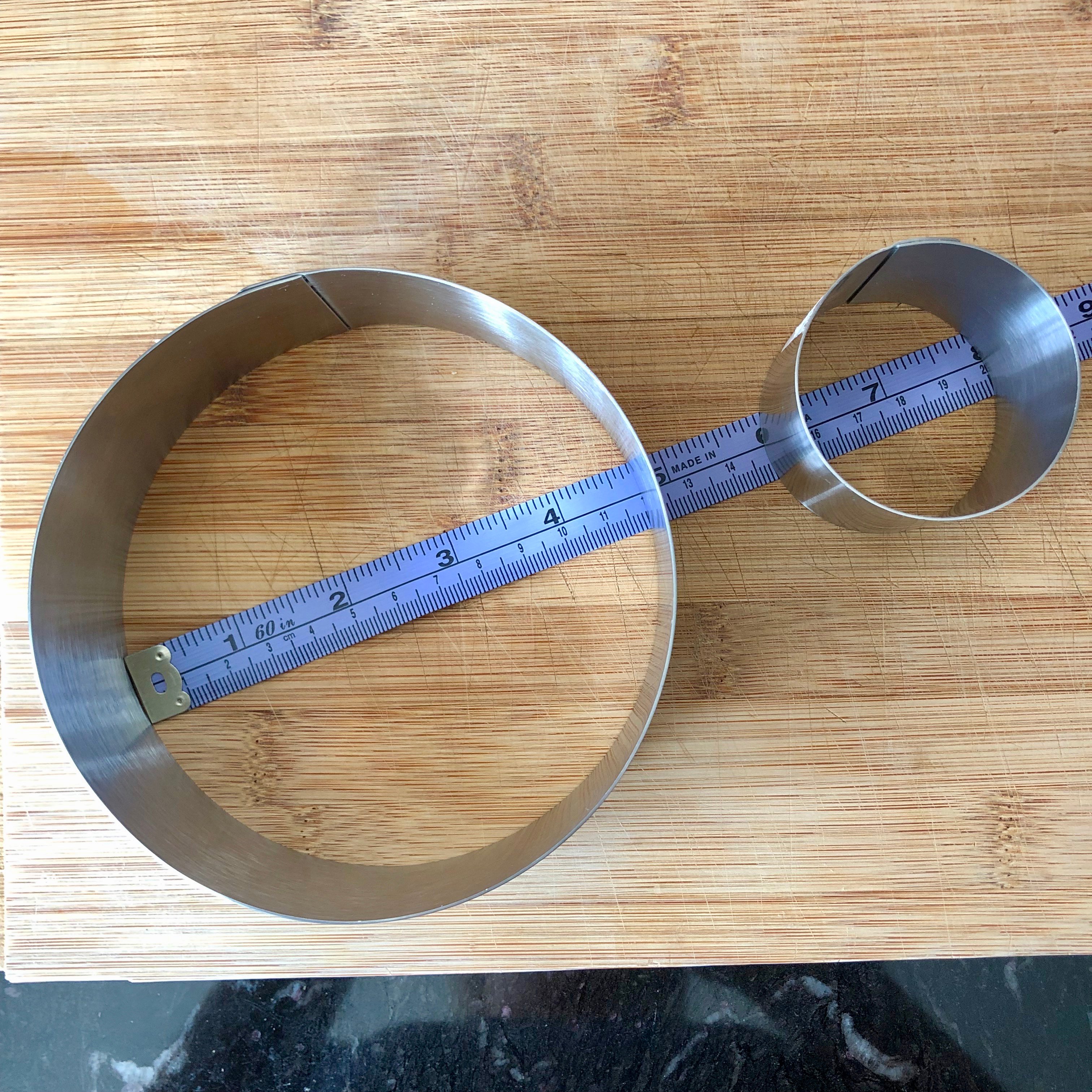
Fry in small batches
You may be tempted to fry several doughnuts at once, but trust me, it is best to take your time. By frying one doughnut at a time you use less oil (your pan is smaller) but you can also perfectly control each and every doughnut you make. You also avoid having doughnuts stick together in the pan.
Don’t waste a bit of dough
Any leftover dough which is not enough to make another doughnut can be rolled into balls, fried and made into doughnut holes! Roll those in sugar too and pop them in your mouth for a small treat.
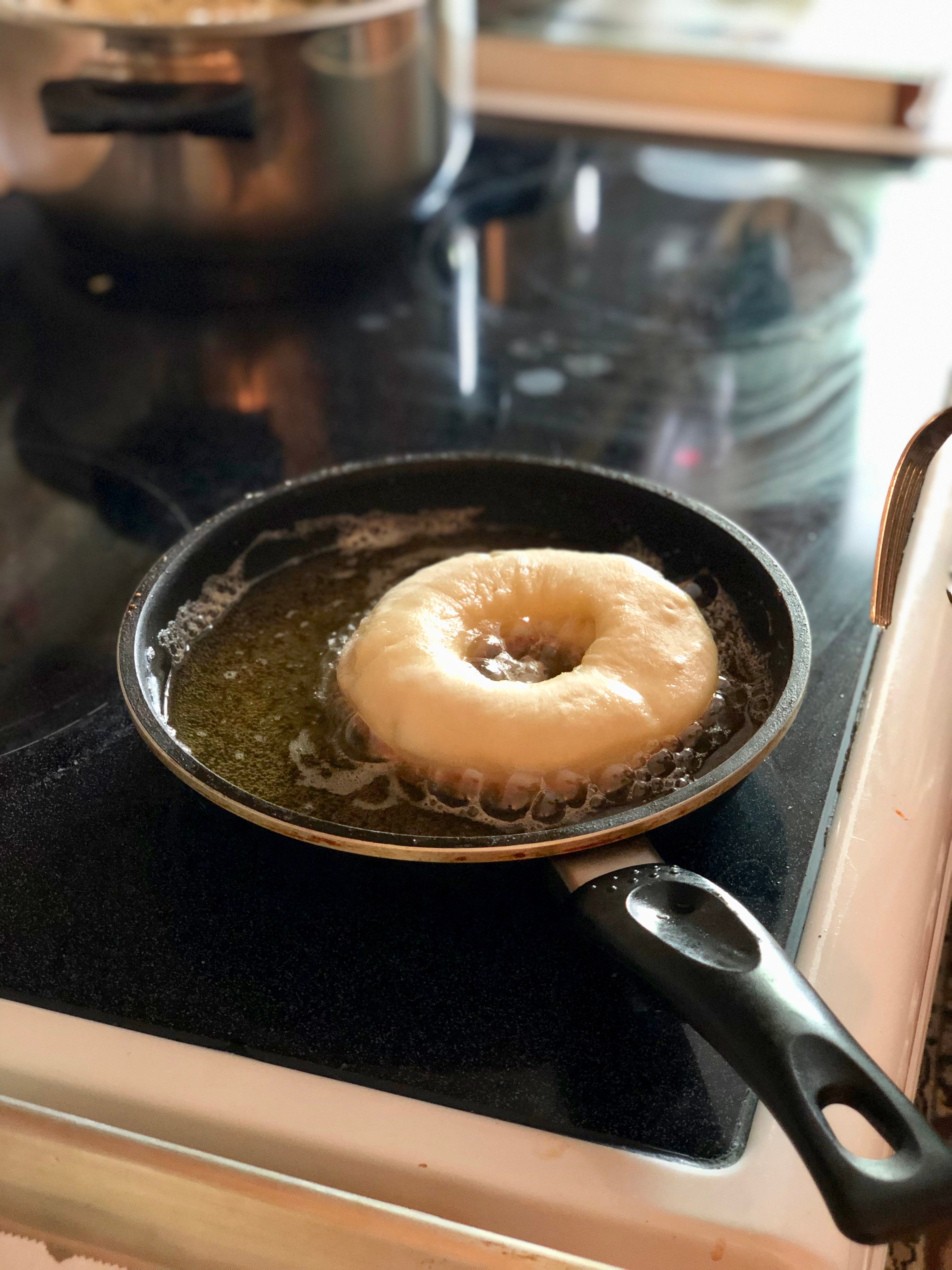
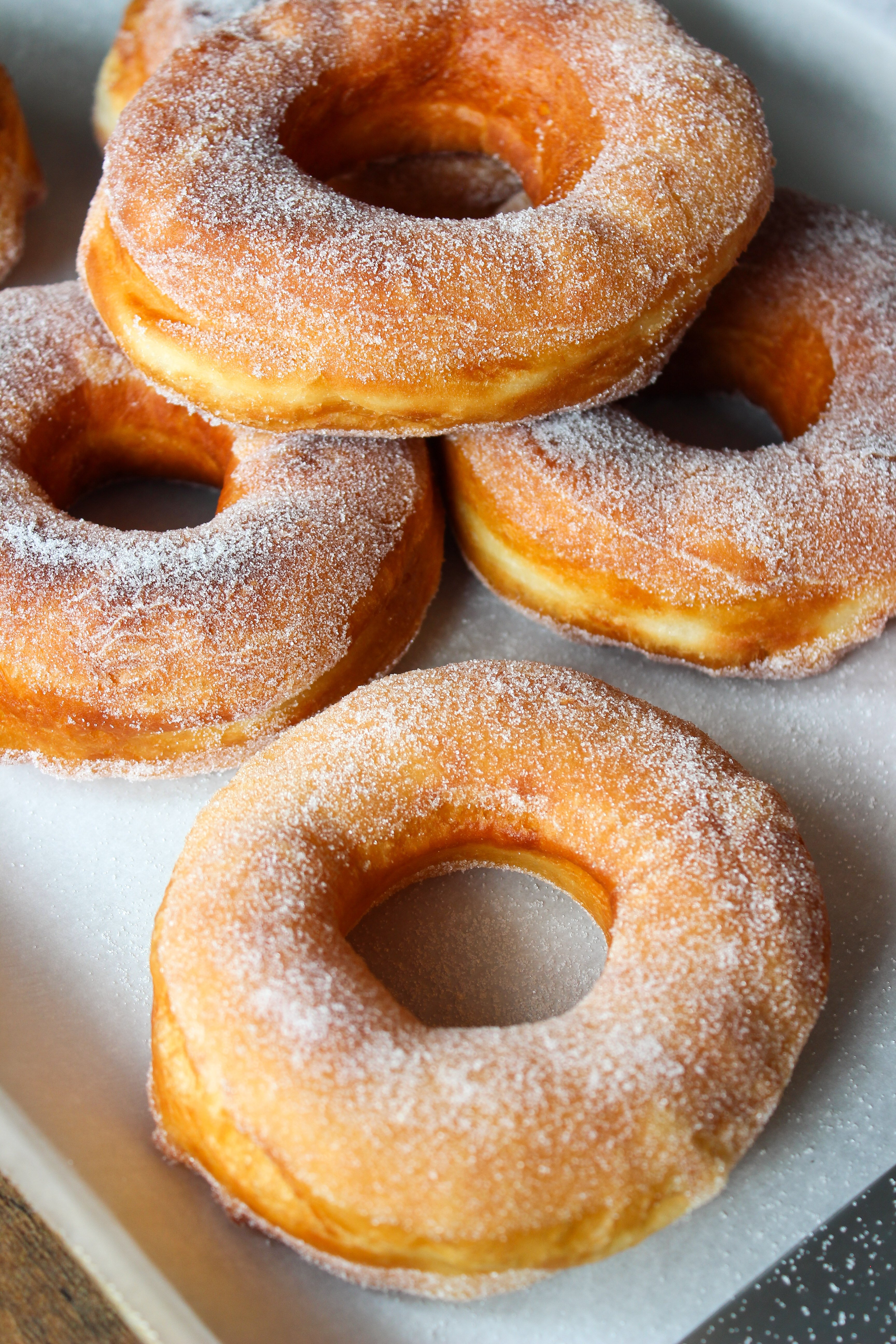
Frequently asked questions
Why use both butter and vegetable shortening?
The use of shortening and butter in this recipe is pretty essential. The combination gives a great flavour and great texture. Remember, my parents rarely use either butter or shortening, so if they say you must for this recipe, you must.
How can I get superfine sugar?
You can purchase the superfine sugar in most well-stocked grocery stores, baking shops or online. It is often hard to find however. Instead, do what I do and make your own. Instructions on how to do this are in the recipe notes in the recipe box, but essentially you just blend regular white sugar until you get a fine white powdery substance.
How to store
These doughnuts are best eaten the day they are made, or the day after. You probably won’t have any left after that, so it doesn’t really matter that they are less great on day 3. If you will have leftovers however, store them in a covered container (a cake dome would work great) at room temperature.
How to serve
When I was young, these Greek sugar doughnuts were served with a glass of milk or a cup of hot cocoa. Now, I enjoy them with either a Greek coffee or a frappe, ideally on a beach in Greece, but also in my kitchen or back patio.
Pin this recipe, if you like it
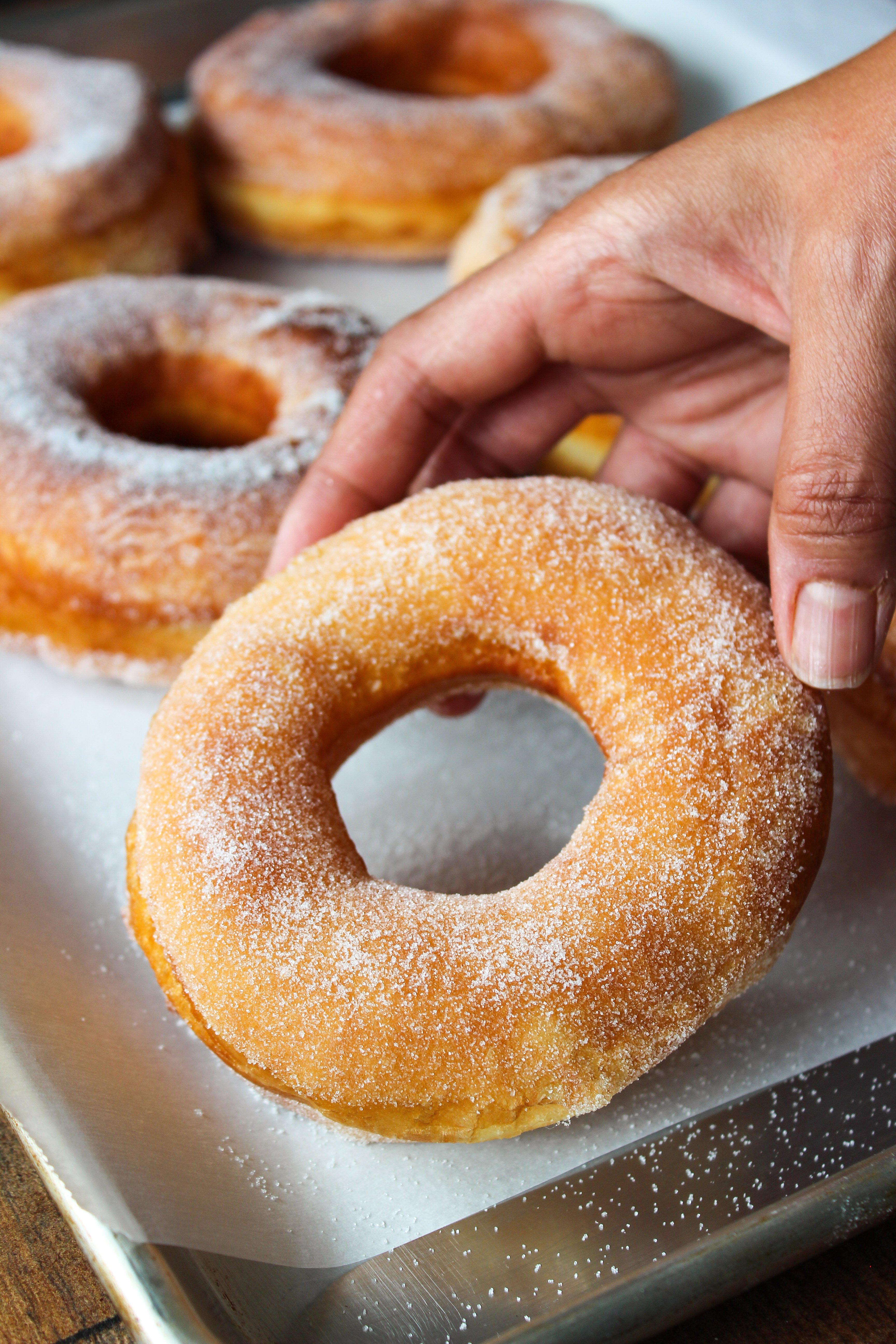
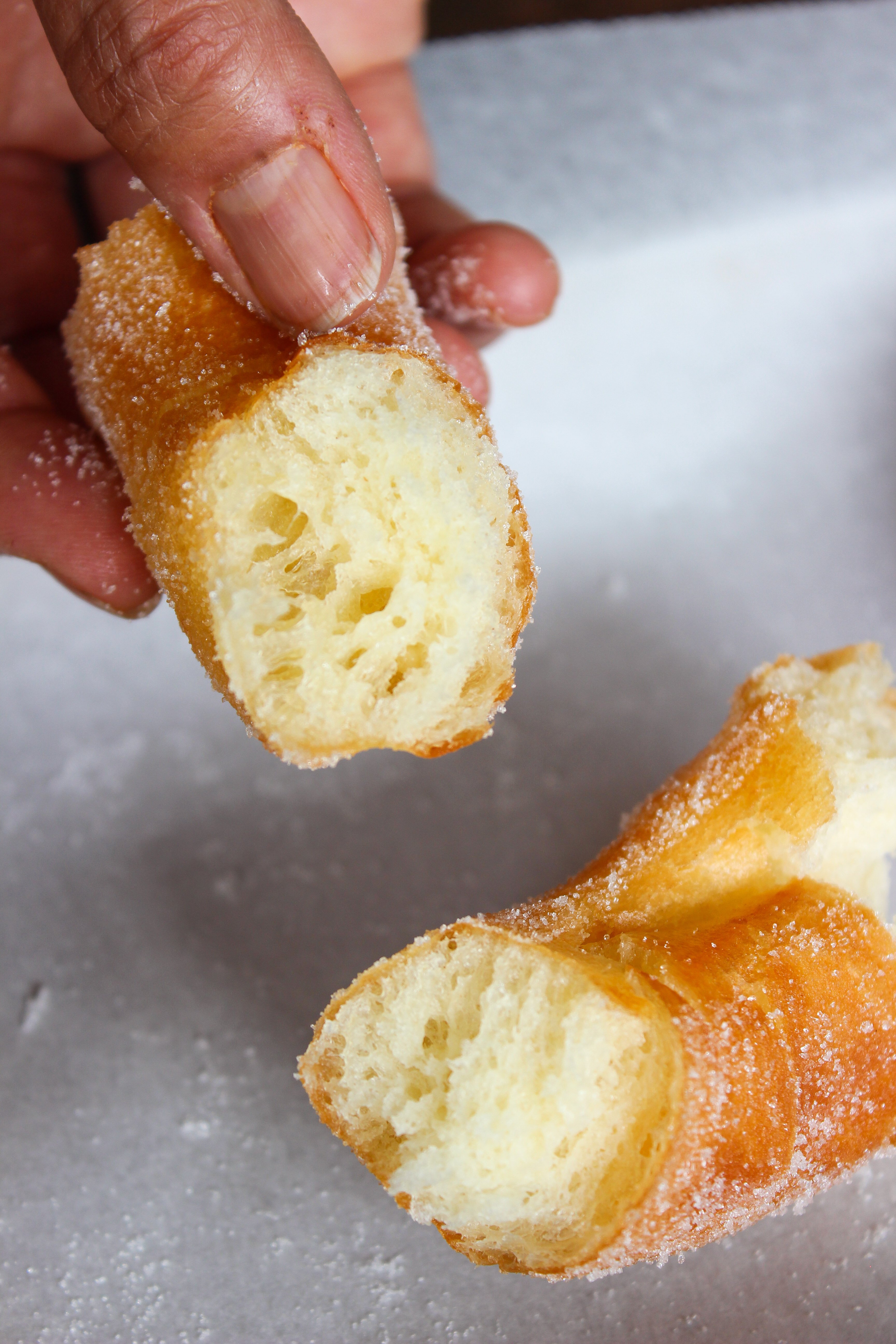
Related recipes
If you love these Greek sugar doughnuts I think you will also enjoy these other Greek sweets:
Loukoumades Often referred to as Greek doughnuts, these balls of dough are fried and then coated in honey before being sprinkled with cinnamon. Sometimes I add chopped walnuts to the top as well.
Samali This is a very unique Greek dessert made with semolina and flavoured with orange and mastic. It is a cake that is soaked in syrup after it is baked.
Portokalopita Another syrup soaked dessert, portokalopita is the classic Greek orange cake made with dried and crumbled up phyllo dough, instead of flour. It is unique, and absolutely delicious.
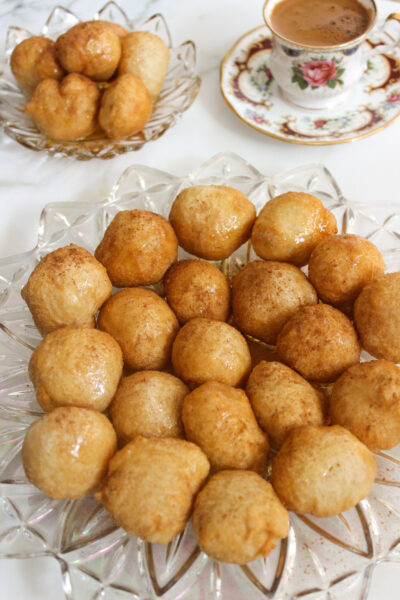
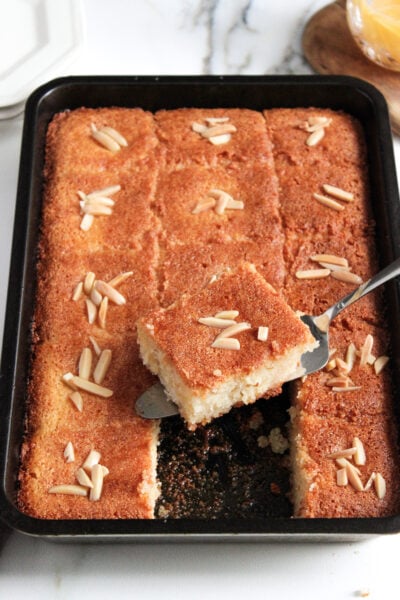
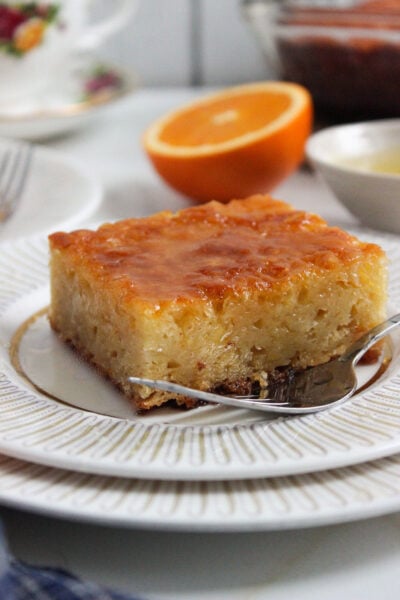
Beach memories
I recently returned from a holiday in Greece, with my family and my sister Helen. We had a wonderful time touring a few islands, and spending quality time with family in Kalamata. There, every morning, my cousin Giorgios would take his moped (mihanaki) to a nearby bakery and would pick up treats for our morning snack at the beach. His bag would be full of kouloures, lalagia, and sugar doughnuts, or zaharota as he would call them. Swimming, tanning, listening to the waves, and feeling your heart full of joy really does work up an appetite, and his bag of goodies was always a welcome treat. Now, back at home, I will definitely be whipping up a batch of these doughnuts. I will enjoy them with a frappe as I scroll through the photos and videos taken during this most wonderful vacation.
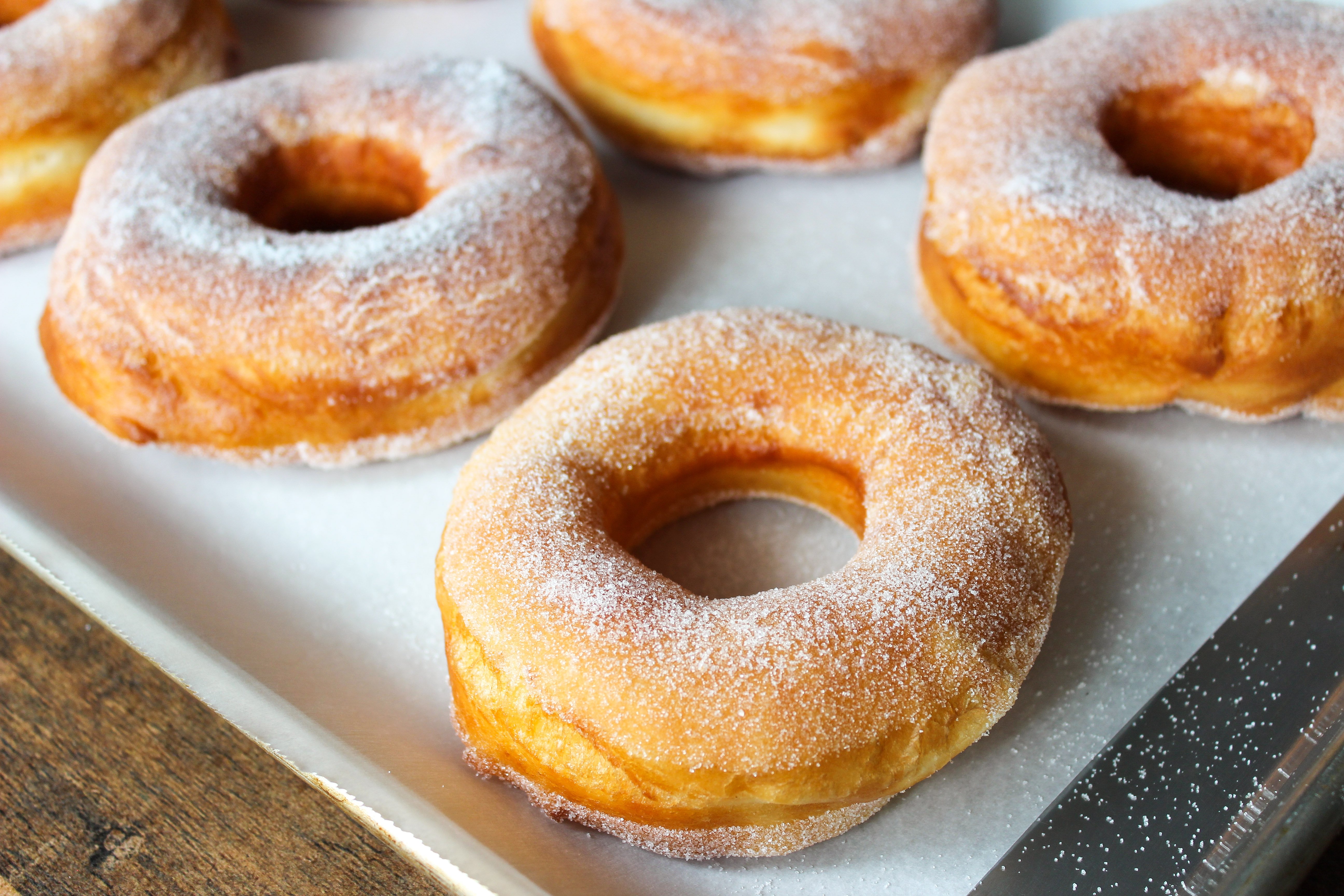

Sugar doughnuts (Ντόνατς με ζάχαρη) or Zaharota
Equipment
- stand mixer with paddle and dough hook attachment
- Doughnut cutter or two circular cutters
- Cooling racks
- Blender or food processor if you will be making your own superfine sugar
Ingredients
- 1 cup milk whole or 2% milk fat, at room temperature
- 1 tsp white vinegar
- 3 cups all purpose flour
- 3 tbsp superfine sugar see Recipe note
- 1 tbsp dry yeast
- 1/2 tsp vanilla powder or 1 tsp vanilla extract
- 1/2 tsp salt
- 2 large eggs at room temperature
- 2 tbsp butter softened
- 2 tbsp vegetable shortening or vegetable oil softened
- vegetable oil or canola oil for frying
- 1 cup granulated white sugar for coating your doughnuts
Instructions
- Combine the milk and the vinegar. Stir and let stand at room temperature for approximately 5 minutes and then stir again. This will make sour milk, which will curdle slightly.1 cup milk, 1 tsp white vinegar
- In the bowl of a stand mixer, combine the sour milk with 1 tablespoon of the superfine sugar and the dry yeast. Mix well to dissolve the yeast.3 tbsp superfine sugar, 1 tbsp dry yeast
- Add 3/4 cup of your flour to the bowl, whisk well to create a smooth paste and then cover with plastic wrap and let the flour mixture rest in a warm place for 30 minutes.3 cups all purpose flour
- After 30 minutes, to the bowl with the flour mixture add the remaining 2 tablespoons superfine sugar, eggs, butter and vegetable shortening (or vegetable oil). Mix on low speed using the paddle attachment of your stand mixer until all is well combined. Then, switch to your dough hook attachment and add the rest of your flour, the salt and vanilla.1/2 tsp vanilla powder, 2 large eggs, 2 tbsp butter, 2 tbsp vegetable shortening or vegetable oil, 1/2 tsp salt
- Mix well on low speed until the dough starts to come together and pulls away from the sides of the bowl. The dough should be smooth and sticky, but you should be able to roll it out at this point if you needed to (which you don't).
- Cover the dough with plastic wrap and allow to rest in a warm place for 30 minutes.
- After 30 minutes have passed, punch down on your dough to remove any gas bubbles which may have formed. It will be sticky. Then, cover your bowl once more with plastic wrap and keep the dough in your refrigerator for at least 1 hour and up to 24 hours.
- When you are ready to make your doughnuts, roll out your chilled dough on a surface which has been lightly floured. Roll the dough to 1/2 inch thickness and use a doughnut cutter to form your doughnuts. We like to use 2 round cutters to make the large doughnuts which are more traditionally and typically Greek.
- Keeping your surface always lightly floured will prevent the dough from sticking to your board.
- Transfer your doughnuts to a parchment lined baking sheet. To prevent the dough from sticking to the parchment paper, it's a good idea to lightly oil the surface of the parchment paper. When you have finished shaping your doughnuts, allow them to rest for 30 minutes at room temperature.
- Heat enough vegetable or canola oil to come up 1/2 inch in your frying pan. We like to use a small frying pan so that we can fry one doughnut at a time. When your oil is quite hot, about 330 ℉, carefully slip one doughnut into the oil. Cook over medium low heat for approximately 60 seconds per side. Using 2 forks makes flipping your doughnuts over quite easy.vegetable oil or canola oil
- Transfer your cooked doughnuts to a cooling rack. Repeat until all of your doughnuts are fried.
- In a shallow bowl add the granulated sugar. Transfer your doughnuts, one at a time to the dish and shake them gently so that they get coated with the sugar. Flip your doughnut and repeat so that both sides are coated with sugar. Repeat with all of your doughnuts.1 cup granulated white sugar
- Enjoy!


Hi love your blog and recipes. How much flour it’s says 2-2 3/4? Not sure is it supposed to say only 2 cups or is it 4 cups thank you
Hi Katerina. Thank you so much, we really appreciate that. For the flour, it’s 2 cups.. to 2 1/3 cups. It’s a range. You might only need 2 cups, but we added an additional 1/3 cup to the recipe, in case a little bit more was needed. Please let us know if you have any other questions.
Do you know anyone who sells them in london please x
Hi there. Sorry we do not – but you can try following our recipe to make them yourself! They are fun to make, and not too difficult. xoxo Helen & Billie
Hi Katerina. Thanks for the message. The flour amount is listed as a range, because you may need to use a little less or a little more depending upon your flour, your altitude, humidity…etc. Thanks for pointing out that this may not be clear; we’ll make an adjustment so that it is less confusing. Happy baking!
“Donaaaaats, Donaaaaats”…I can still hear this everytime I visit a beach in Greece – even if there is no 70 year old doughnut man on the beach! I been searching the internet for the last few months for this recipe and was gobsmacked when I saw this on Mia Koupa! You have filled my Greek doughnut void. Keep the the fantastic work up on this blog. Its truly refreshing, entertaining and you portray Greek recipes and the Greek household and family in its true wonderful colours through food and culture. Well done! Mihalis.
Oh thank you for your comment and support Michael! We really appreciate it! We are so happy that you found our “donaaaats” recipe 🙂 🙂 Please let us know how you like them…we think you’ll be very happy with them 🙂 Thanks again!
Look so yummy. Have you tried cooking them in an Airfryer ?
Hi Gunnie! Thanks! We have not tried an air fryer. We don’t actually have one so have no idea how they would turn out. If you ever do try them, let us know how they end up 🙂